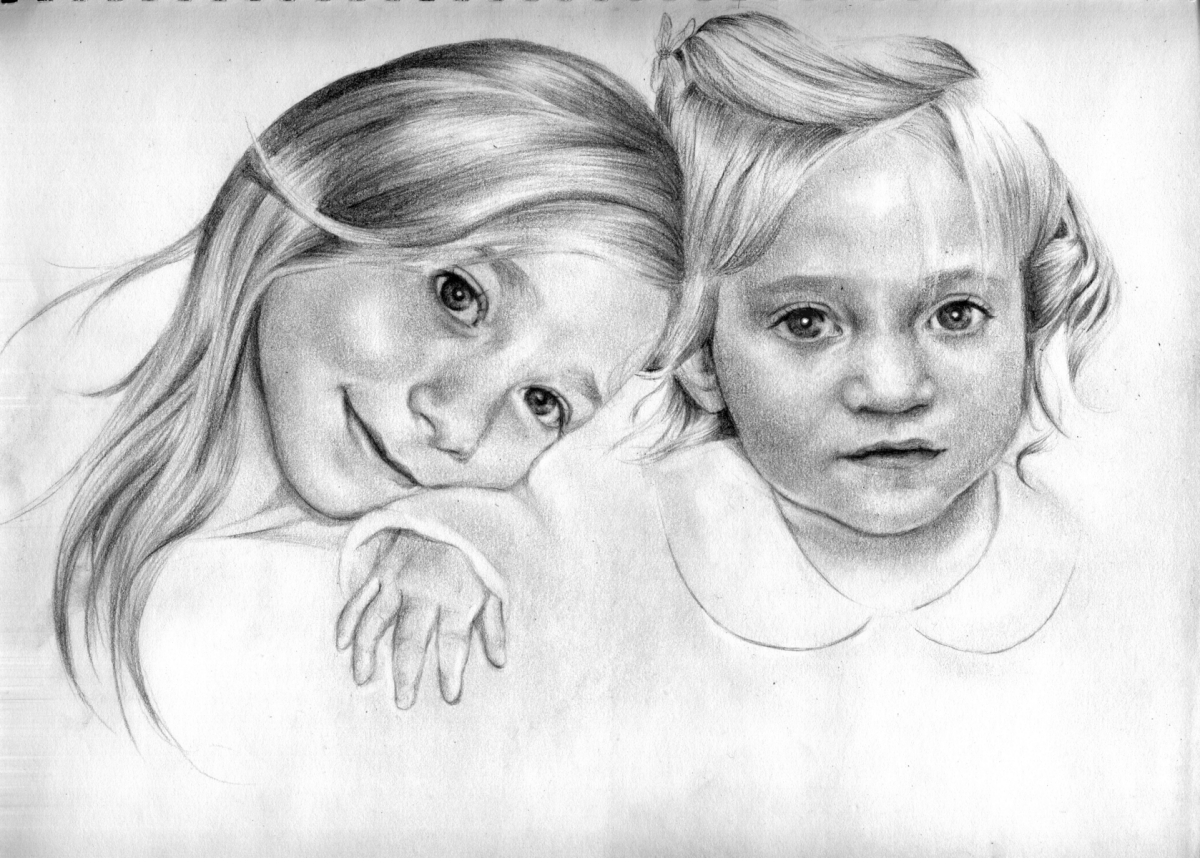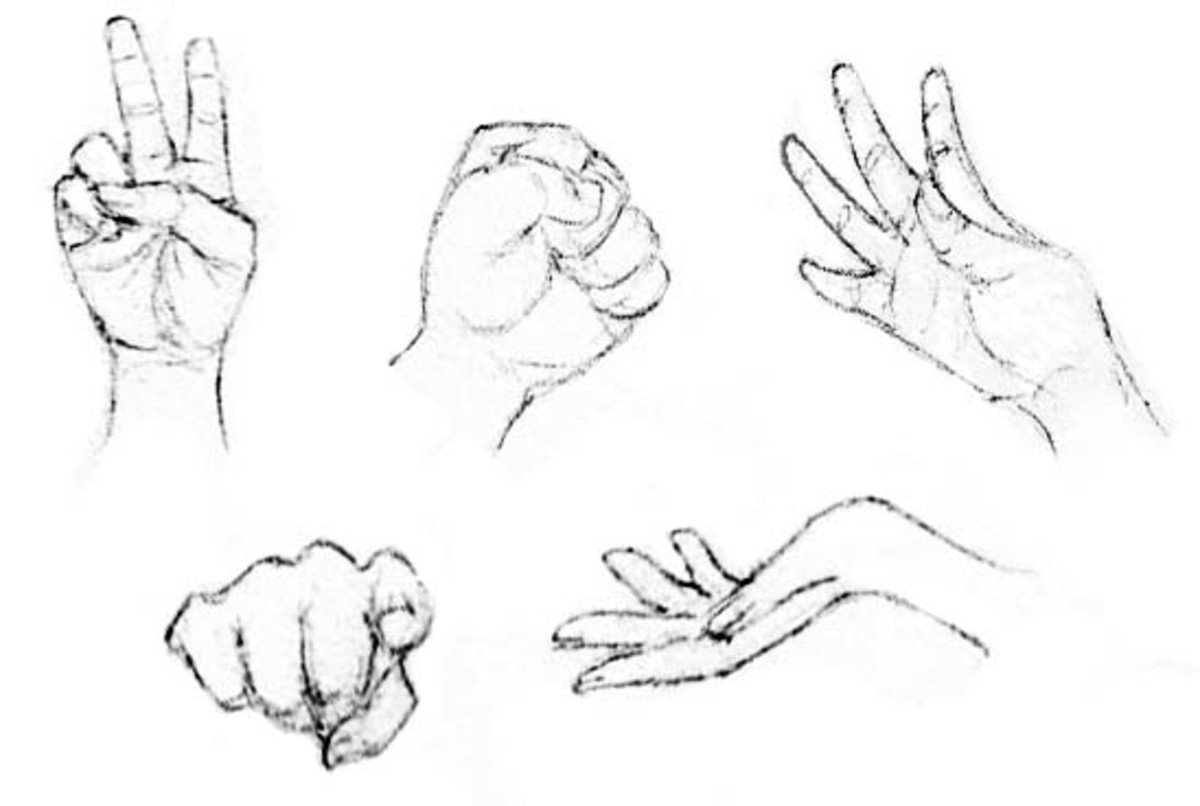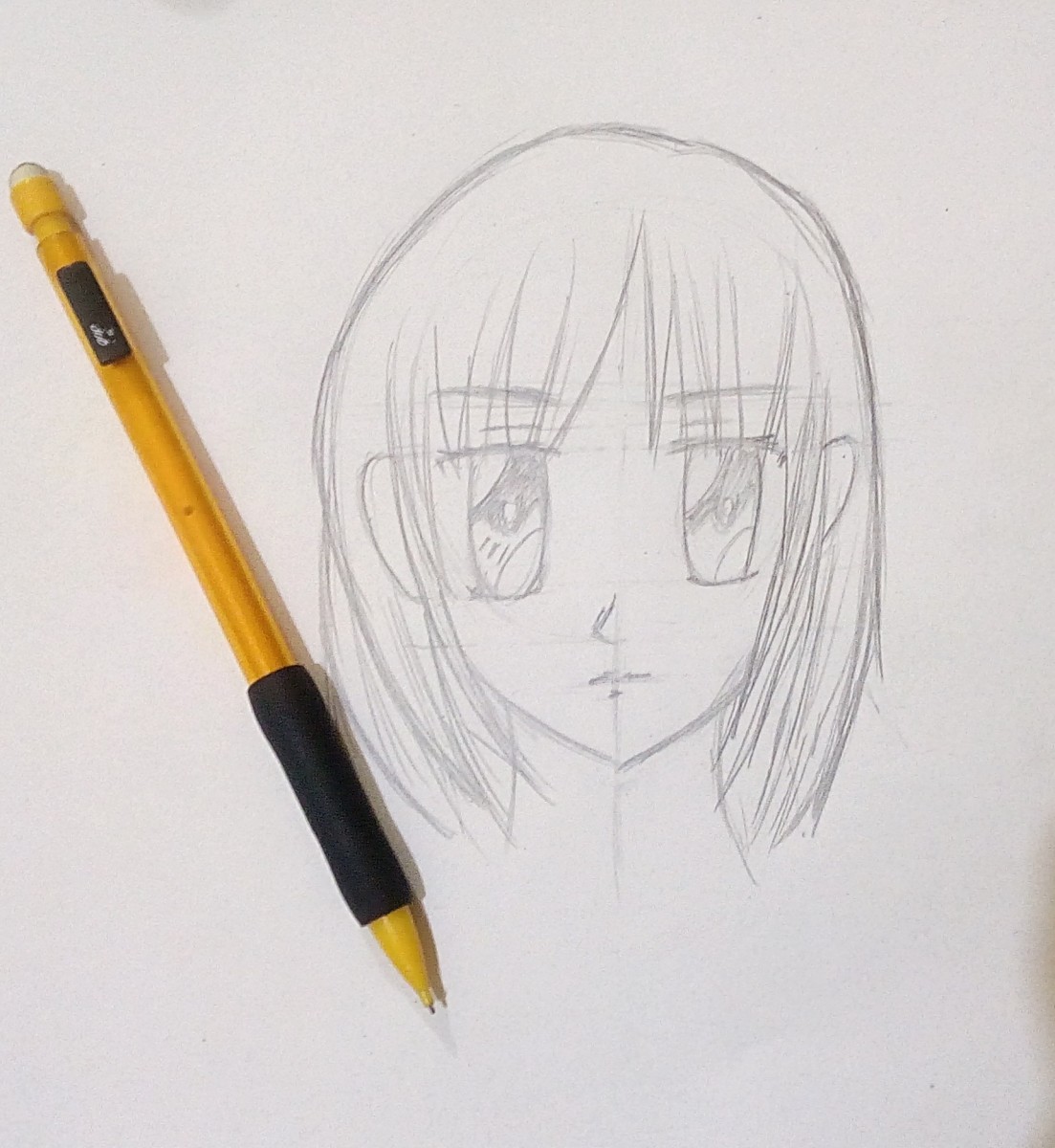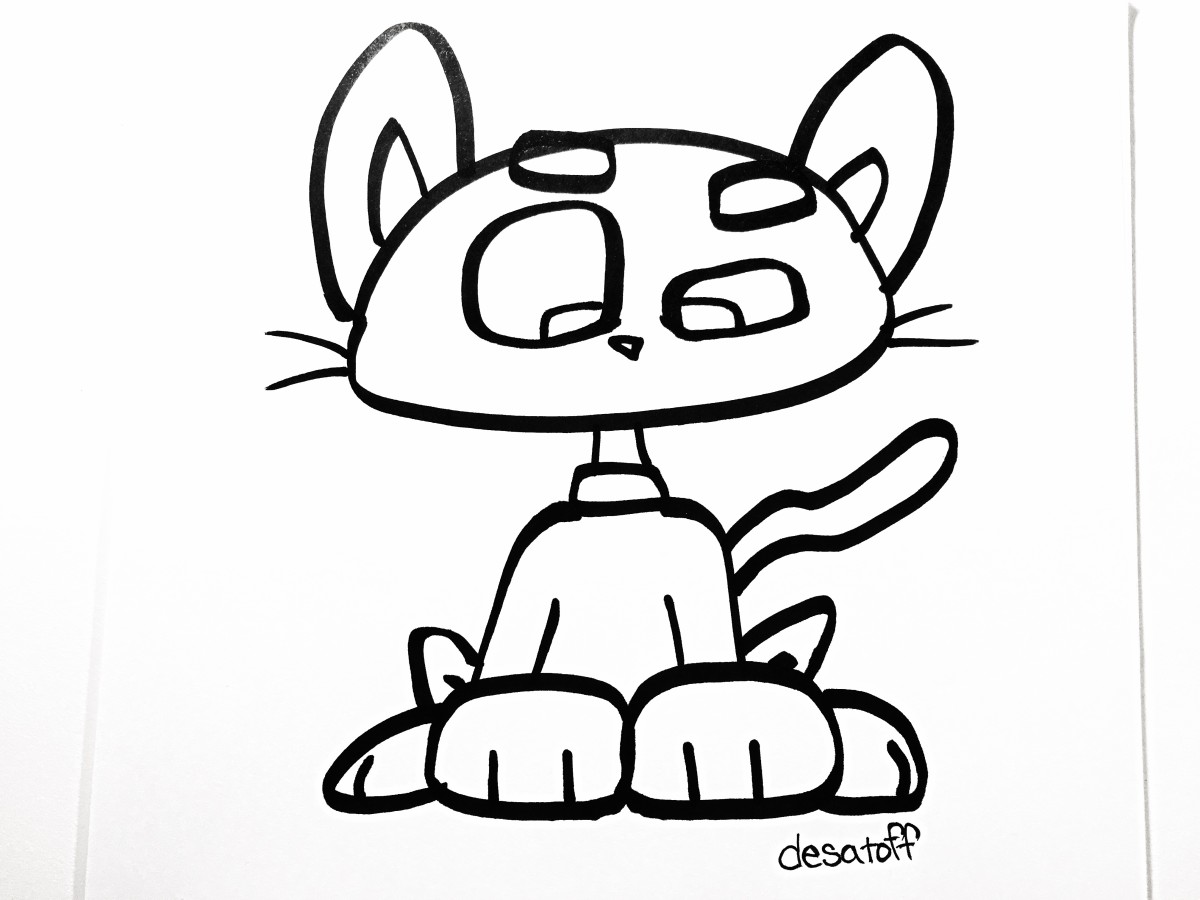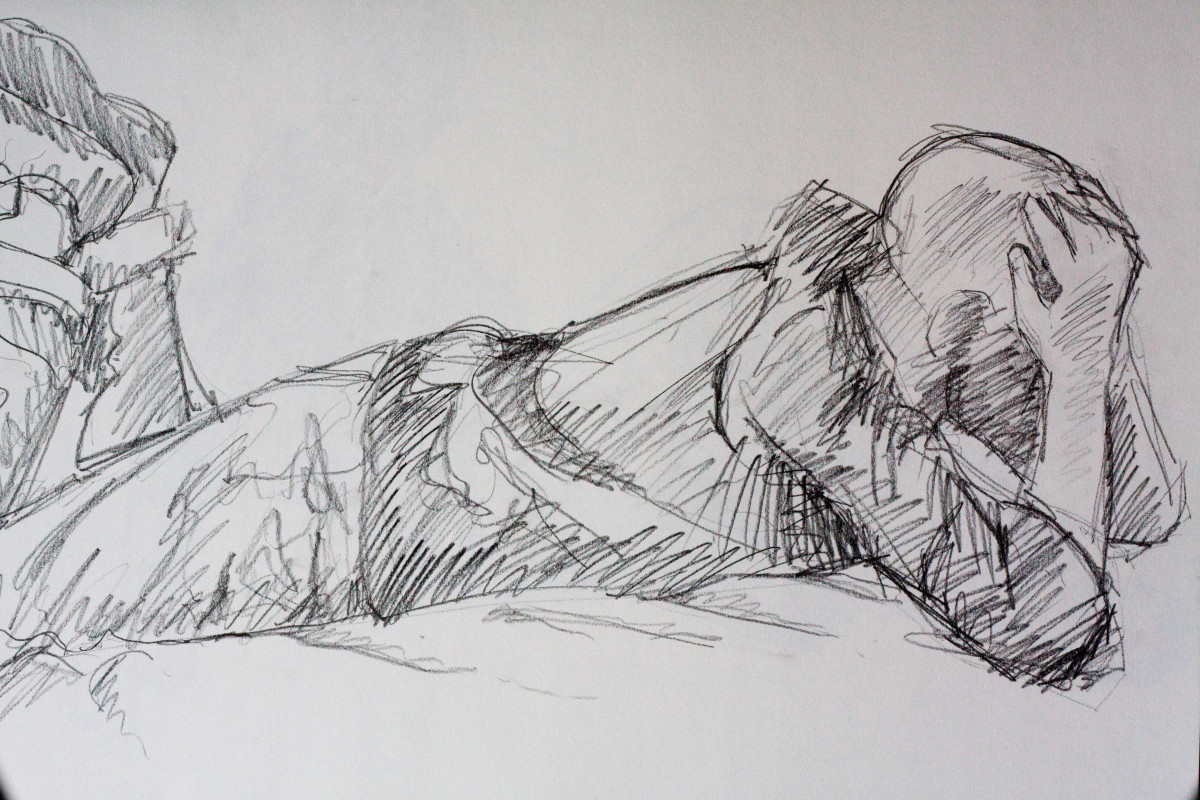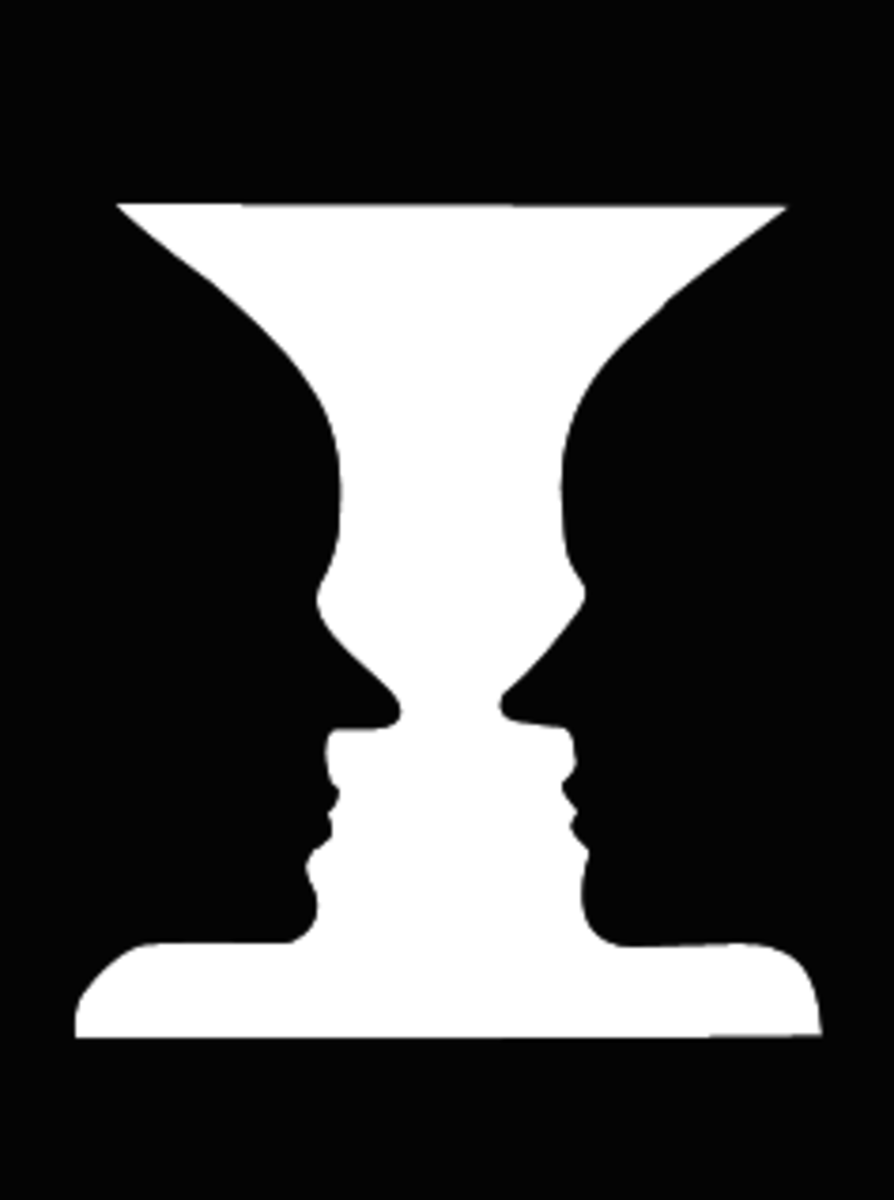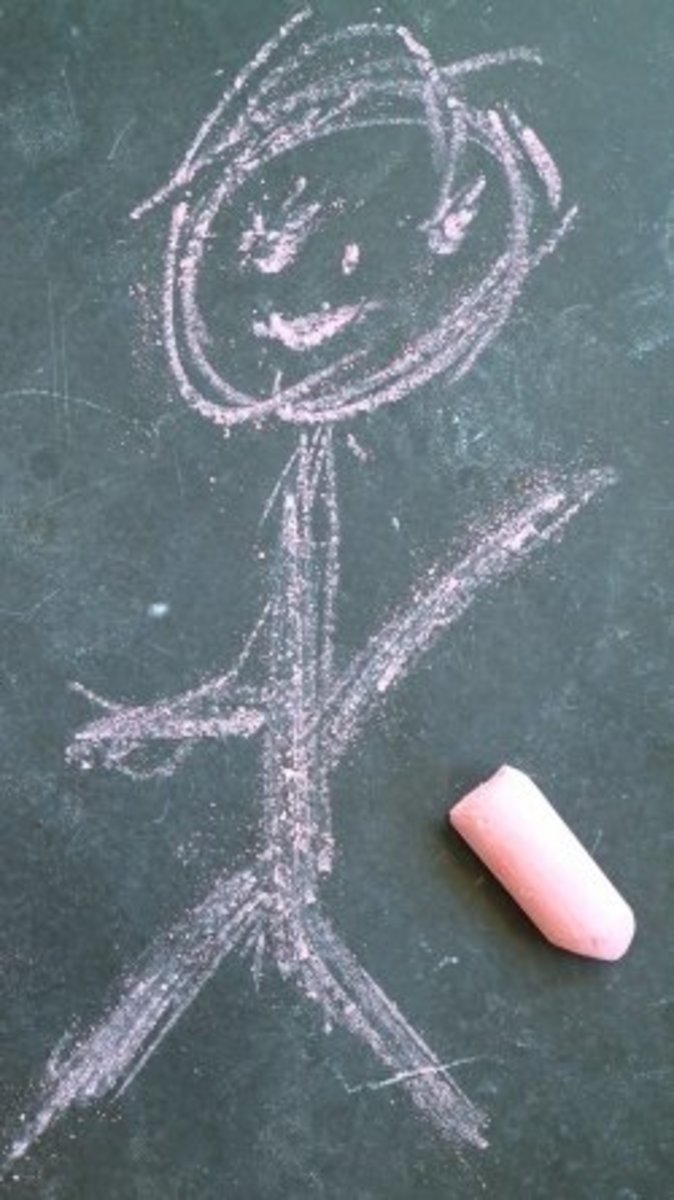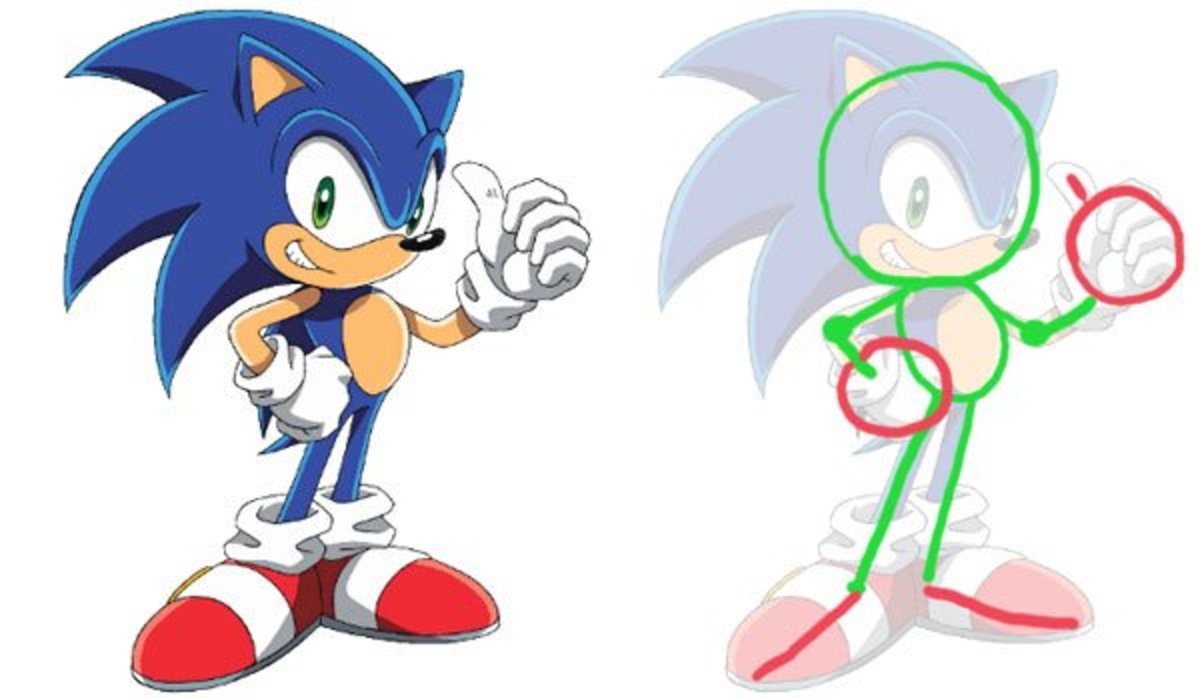How To Draw Characters: A Friendly Introduction
Drawing Characters Takes Practice
This is a basic introduction to drawing characters. I've included three sample drawing charts each with four steps to allow you to see how the marks have been made. Before I begin to break down various marks you'll need to acquire some basic materials, the less fancy the better for beginners!
You will need:
- A scribbler. Try to make it anything but a ball point pen. The reason being is that a ball point pen offers no line quality. You want the variation a pencil or angle tipped marker/pen has to offer. An angled sharpie works on a most basic level, a nub quill and inkwell are inexpensive and the professional standard.
- Paper. Anything will do except maybe tissue or toilet paper! Newsprint is good, that way your drawings don't go growing precious on you all at once, and scare you away from making bolder marks.
- A mirror or any book with faces in it. This is what you will use as your model or reference. Make the expression of the character you would like to draw, and proceed to draw it. Or find a clip in a book of the expression you would like your character to have, and model after that expression.
Lets get down to business. If you are going to follow this as an exercise I suggest taking your first piece of paper and quartering it off as I have done. Then, as closely as you can, make four head shapes, any shape you would like, but try to make them identical. Next take your other two pages and trace the quarter mark as well as the four head shapes. Now you have twelve heads to practice on, and you can focus on the expression which is what lends the most definition to a character.
Let's look at the sketch of "Ken". Right away from the 1st quarter of the drawing you can see he's smiling with his eyes, because the lines are two arches curved up. His hair is asymmetrical which immediately gives the character a whimsical look. Next in the second quarter of the sketch you see Ken's nose is made up of two lines, his eyes are made of a circle with another circle in it. In the beginning, try and practice the same shapes and lines over and over again for each of your characters. It's OK if they vary from frame to frame in your storyline, but the more they look alike, the more your viewer will be able to recognize the attributes of your character. Next in the 3rd frame we see Ken has sprouted some sideburns, which means we know he's a man of character! Perhaps he is one of the founding fathers, or maybe he sings in a blues band. Also we see that his smile is developed with only three lines, and he has a somewhat coy expression because this smile is set to one side.
In the final quarter of our sketch of Ken we see a little more definition to his nose and his eyebrows coming together. Pay special attention to the eyebrows, experiment as they pull the features of the eyes and mouth together. Combined these three features of a face are what give the most expression to any of your characters. More about that later. Let's give a crack at the ladies next. Also, if you're getting frustrated at this point, hang in there! All is not lost! If you crash your plane you can fly it again! Just tear up the paper and start anew, I won't tell anyone if you won't!
Characters Are All About Expression
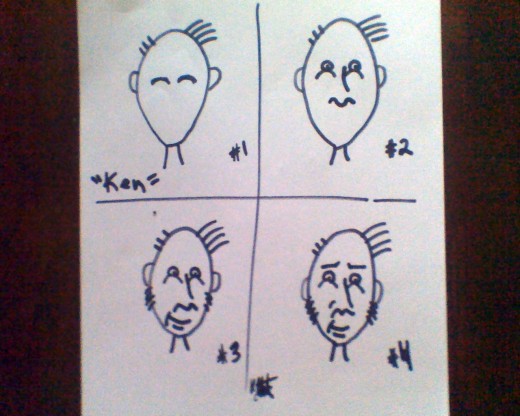
Congratulations, It's A Girl!
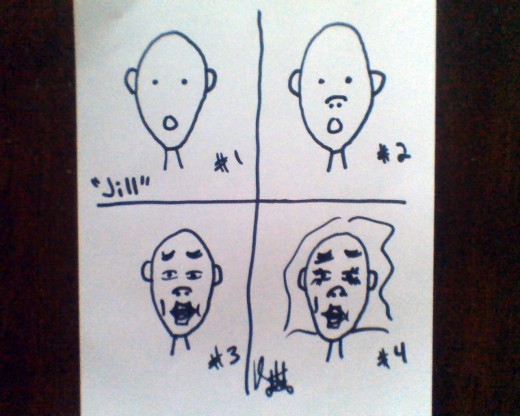
Female faces
Now although we're using the same head here, a females head can be drawn differently. In the beginning you may want to make the female characters in your work more slender, more slim. As you improve with practice, just like in real life, females heads come in all shapes and sizes. But for a beginner, stick with what's easy. You can see by the shape of the "oh" on the face that, regardless of gender, this shape to the mouth lends a look of surprise. Similarly, the eyebrows raised furthers this look along. "Jill" has a pug nose, made with just a few simple dots and lines, her mouth is further feminized by adding full lips as you see in the third and fourth quarters of the sketch. Lastly, to add another recognizable icon of girlishness, long hair is added. Now of course a male character can have long hair and full lips, but for a beginner its especially nice to stick with some of the more recognizable icons and make your characters easier to identify both for you and the viewer. Eyelashes, added in the fourth quarter of this sketch, add one last easily recognizable female feature to "Jill".
Take a good look at the difference between the male and the females that you've drawn. Do you see the differences? Do you see the similarities? Just as in life, some males have very feminine features, and some females have some masculine features. If you're just starting out, keep it simple and beef up the men, slim down the girls. As you get better at drawing your characters, challenge yourself by doing the opposite! There's no reason to stick to stereotypes, and it can be the most fun of all when you learn to recognize particular muscles related to the sexes, and how to exaggerate or modify them in gestural lines.
Meet Angry Dan
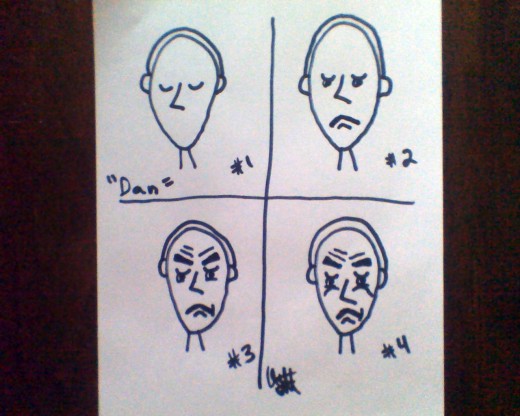
Think beyond the face of a character when drawing. Is Dan mad because he recently got in a fight? Maybe someone ran over his dog. Background will inspire you!
In the "Dan" sketch, you can see that I chose to draw the eyelids as curled down in the first quarter of the drawing. As you follow the 2nd, 3rd and 4rth quarters you can see I added more lines around the eyes. By drooping the eyelids down, the expression on the character is more solemn, bordering on sad. The eyes are where all the expression for a character begins and ends. Next look at the mouth. The down turned mouth shows an expression of consternation or more grief. Lastly look at the eyebrows. Here they are turned inward again adding to the look of consternation. George Carlin the famous comedian said it best when the said, the reason dogs are so much more likable than cats is because they have eyebrows! I happen to be more of a cat person! But you get Mr. Carlin's point, eyebrows tie in a lot of expression.
In drawing characters you will need to practice over and over again how to lend certain qualities to certain characters. In the Dan sketch his hair is distinctively smooth, his nose distinctively pointy and his eyebrows especially thick. These small things become more recognizable and more important to the development of your character if you are working them into a story board, cartoon, graphic novel or comic book. Don't be disheartened if your character isn't turning out exactly as you want it, just concentrate on making them look the same in the beginning, all the details of expression will come with practice.
If you are setting up a story, set out all of your characters in separate "files". Draw them with different expressions so you can reference those expressions as you carry them along in your story. Before long, you will get the hang of what each character looks like in a given situation or with a certain reaction. Human expression is complex but that's what makes life interesting! So practice, practice, practice! Development of your characters in part depends on how well you get to know them on your own. Good luck, I hope this introduction gives you confidence in drawing your characters and that you continue on in your drawing career!
Here's another article on my drawing. I wonder if my hand will fall off before I can complete a million?
- How To Prepare A Canvas Painting With Gesso
You must prepare a canvas or any other painting surface first, before you begin to paint. If you don't an art historian will come to your studio and spank you with a boat oar. Well, maybe not, but you... - Pricing For Creatives: How To Price Quote An Art Com...
When I meet someone from around the world, someone not from my home country of the USA and I tell them I am an artist they tend to ask a question that my countrymen don't often ask. Namely they ask, what is... - An Artist's Dream: Oil Paint, Heirloom Tomatoes And ...
From the Oil Painting: Dancing With Black-Eyed Susan by artist Ben Zoltak Most of my early life, when I told people I was an artist, they generally sneered and scoffed at the notion. - Who Wants To Be An Artist Millionaire?
Here is a standard from Ben Zoltak, can you commission a true original? (all image rights retained by Ben Zoltak) If you want to make money as an artist, you have to live up to the conviction of your... - A Million Drawings For Cancer Research
Help my daughter and I raise a million dollars for cancer research one drawing at a time. My daughter and I were brainstorming different ideas as we sometimes do. We came up with the notion that I could...

